
Screwball comedy is a film subgenre of the romantic comedy genre that became popular during the Great Depression, beginning in the early 1930s and thriving until the early 1950s, that satirizes the traditional love story. It has secondary characteristics similar to film noir, distinguished by a female character who dominates the relationship with the male central character, whose masculinity is challenged, and the two engage in a humorous battle of the sexes.

Carole Lombard was an American actress. In 1999, the American Film Institute ranked Lombard 23rd on its list of the greatest female stars of Classic Hollywood Cinema.
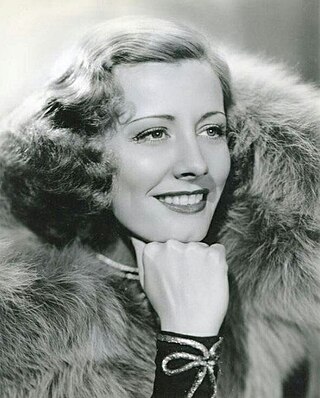
Irene Dunne was an American actress who appeared in films during the Golden Age of Hollywood. She is best known for her comedic roles, though she performed in films of other genres.

Twentieth Century is a 1934 American pre-Code screwball comedy film directed by Howard Hawks and starring John Barrymore and Carole Lombard. Much of the film is set on the 20th Century Limited train as it travels from Chicago to New York City. Ben Hecht and Charles MacArthur adapted their 1932 Broadway play of the same name – itself based on the unproduced play Napoleon of Broadway by Charles Bruce Millholland – with uncredited contributions from Gene Fowler and Preston Sturges.

Gregory La Cava was an American film director of Italian descent best known for his films of the 1930s, including My Man Godfrey and Stage Door, which earned him nominations for Academy Award for Best Director.

Mischa Auer (born Mikhail Semyonovich Unkovsky was a Russian-born American actor who moved to Hollywood in the late 1920s. He first appeared in film in 1928. Auer had a long career playing in many of the era's best known films. He was nominated for the Academy Award for Best Supporting Actor in 1936 for his performance in the screwball comedy My Man Godfrey, which led to further zany comedy roles. He later moved into television and acted in films again in France and Italy well into the 1960s.

Nothing Sacred is a 1937 American Technicolor screwball comedy film directed by William A. Wellman, produced by David O. Selznick, and starring Carole Lombard and Fredric March with a supporting cast featuring Charles Winninger and Walter Connolly. Ben Hecht was credited with the screenplay based on the 1937 story "Letter to the Editor" by James H. Street, and an array of additional writers, including Ring Lardner Jr., Budd Schulberg, Dorothy Parker, Sidney Howard, Moss Hart, George S. Kaufman and Robert Carson made uncredited contributions.

Jean Rogers was an American actress who starred in serial films in the 1930s and low–budget feature films in the 1940s as a leading lady. She is best remembered for playing Dale Arden in the science-fiction serials Flash Gordon (1936) and Flash Gordon's Trip to Mars (1938).

Irene Maud Lentz, also known mononymously and professionally as Irene, was an American actress turned fashion designer and costume designer. Her work as a clothing designer in Los Angeles led to her career as a costume designer for films in the 1930s. Lentz also worked under the name Irene Gibbons.
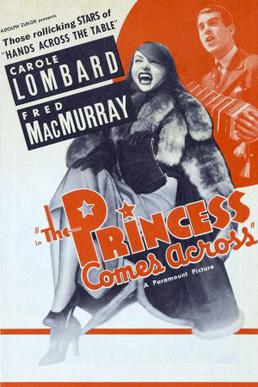
The Princess Comes Across is a 1936 American mystery comedy film directed by William K. Howard and starring Carole Lombard and Fred MacMurray, the second of the four times they were paired together. Lombard, playing an actress from Brooklyn pretending to be a Swedish princess, does a "film-length takeoff" on MGM's Swedish star Greta Garbo. The film was based on the 1935 novel A Halálkabin by Louis Lucien Rogger, the pseudonym of Laszlo Aigner and Louis Acze.
The comedy of remarriage is a subgenre of American comedy films of the 1930s and 1940s. At the time, the Production Code, also known as the Hays Code, banned any explicit references to or attempts to justify adultery and illicit sex. The comedy of remarriage with the same spouse enabled filmmakers to evade this provision of the Code. The protagonists divorced, flirted, or even had relationships, with strangers without risking the wrath of censorship, and then got back together.
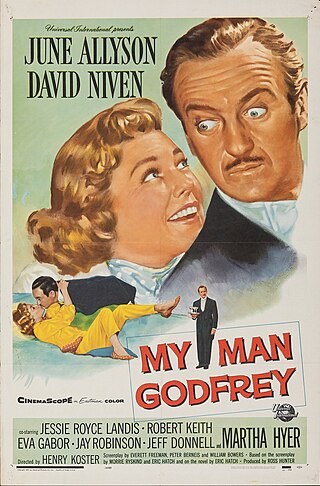
My Man Godfrey is a 1957 American CinemaScope comedy film starring June Allyson and David Niven. It was adapted by Peter Berneis, William Bowers and Everett Freeman, and directed by Henry Koster. The film is a color remake of Gregory La Cava's 1936 screwball comedy of the same name. Allyson played the role created by Carole Lombard in the original version, and Niven took on the role made famous by William Powell. Niven had played the role of Tommy Gray, Godfrey's former classmate, in a 1938 radio version. While the original film from 1936 did not have its copyright renewed and is in the public domain, this film's copyright was renewed. Both films are derivative works of the still copyrighted novel from 1935.

William Horatio Powell was an American actor, known primarily for his film career. Under contract with Metro-Goldwyn-Mayer, he was paired with Myrna Loy in 14 films, including the Thin Man series based on the Nick and Nora Charles characters created by Dashiell Hammett. Powell was nominated for the Academy Award for Best Actor three times: for The Thin Man (1934), My Man Godfrey (1936), and Life with Father (1947).
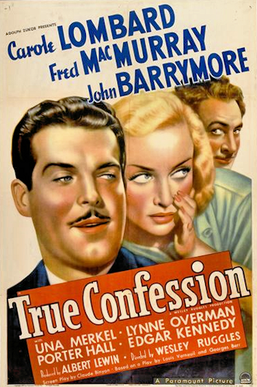
True Confession is a 1937 American screwball comedy film directed by Wesley Ruggles and starring Carole Lombard, Fred MacMurray, and John Barrymore. It was based on the 1934 play Mon Crime, written by Georges Berr and Louis Verneuil. In 1946 it was remade as Cross My Heart.

Fools for Scandal is a 1938 screwball comedy film starring Carole Lombard and Fernand Gravet, featuring Ralph Bellamy, Allen Jenkins, Isabel Jeans, Marie Wilson and Marcia Ralston, and produced and directed by Mervyn LeRoy. It was written by Herbert Fields and Joseph Fields with additional dialogue by Irving Brecher, and uncredited contributions by others based on the unproduced 1936 play Return Engagement by Nancy Hamilton, James Shute and Rosemary Casey. The songs are by Richard Rodgers and Lorenz Hart.

Man of the World is a 1931 American pre-Code romantic drama directed by Richard Wallace and starring William Powell, Carole Lombard, and Wynne Gibson.

Danger – Love at Work is a 1937 American screwball comedy film directed by Otto Preminger and starring Ann Sothern, Jack Haley and Edward Everett Horton. It was produced and distributed by 20th Century Fox. The screenplay by James Edward Grant and Ben Markson focuses on an attorney's frustrating efforts to deal with a wildly eccentric family.

Etienne Girardot was a diminutive stage and film actor of Anglo-French parentage born in London, England.
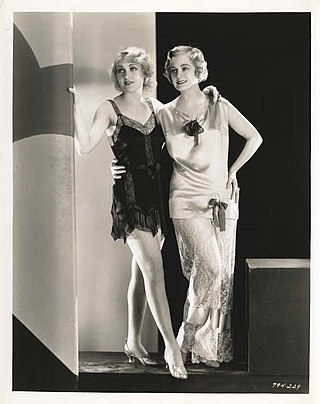
Safety in Numbers is a 1930 American pre-Code musical comedy film. Directed by Victor Schertzinger, it stars Charles "Buddy" Rogers, and features Kathryn Crawford, Josephine Dunn, and Carole Lombard.
Charles R. Rogers, was an American film producer whose career spanned both the silent and sound film eras. Rogers began his career on the 1924 silent film, A Cafe in Cairo, produced by the short-lived Hunt Stromberg Productions. After Stromberg ceased productions in 1925, Rogers would found his own independent company, Charles R. Rogers Productions. He would also produce for major studios such as RKO Radio Pictures, Universal, and United Artists. The pinnacle of his career would be from 1936 to 1938 when he was chosen as the vice-president in charge of production for Universal Pictures. He died as the result of injuries sustained in a car accident in 1957.


















